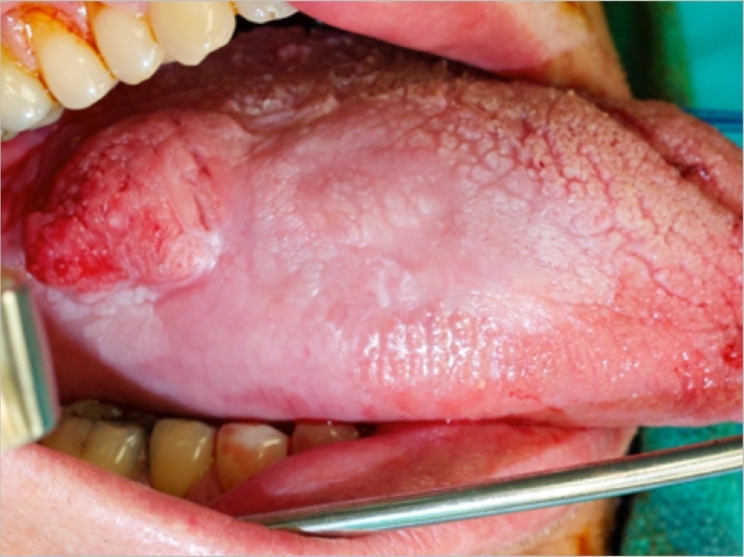
Squamous cell carcinoma of the tongue, also known as oral tongue cancer, is an aggressive disease whose generally poor prognosis often results from its late detection, which is typically before pain starts and after lesions begin to appear. Yet researchers from the Case Western Reserve University School of Medicine, Cleveland Clinic, and the University Hospitals Cleveland Center offer hope for earlier diagnosis and more survival.
The researchers have found that bacterial diversity and richness, as well as fungal richness, are significantly reduced in tumor tissue compared to their matched non-tumor tissues. This raises the prospect that certain bacteria and fungi, in sufficient amounts and in possibly interactive ways, may play a part in the development of oral tongue cancer. Previous research has shown that bacteria can spur gastric and colorectal cancer.
“Our findings mean that it may be possible to perform precautionary testing in patients at high risk for oral tongue cancer,” said study co-senior author Mahmoud A. Ghannoum, PhD, professor in the Department of Dermatology at the Case Western Reserve University School of Medicine and University Hospitals Cleveland Medical Center. “If the patterns that we found are present in people who are not yet showing signs of lesions, we could begin treatment early, offering the possibility of better patient outcomes.”
Arising in the anterior two thirds of the tongue, oral tongue cancer rates have been increasing rapidly, making it the second most common malignancy in the oral cavity, the researchers report. While human papillomavirus (HPV) causes nearly 90% of base-of-tongue tumors, HPV is only found in 2.3% of oral tongue cancer. The causes of oral tongue cancer are unclear, but the researchers believe genetic mutations may play a role, while tobacco use and poor dental hygiene also are correlated with its development.
“Poor oral hygiene has long been associated with oral cancers, suggesting that oral bacteriome (bacterial community) and mycobiome (fungal community) could play a role,” said co-senior author Charis Eng, MD, PhD, professor and vice chair of the Department of Genetics and Genome Sciences at Case Western Reserve University School of Medicine and Hardis Chair of the Genomic Medicine Institute at the Cleveland Clinic.
The bacteriome is increasingly recognized as playing an active role in health, yet the mycobiome has been much less studied, and never before in the case of oral tongue cancer. In the new study, the researchers extracted tissue DNA from 39 paired tumor and adjacent normal tissues from patients with the cancer.
Firmicutes was the most abundant bacterial phylum and was significantly increased in tumor tissue compared to non-tumor tissue, 48% versus 40%, respectively. In total, the abundance of 22 bacterial and seven fungal genera was significantly different between the tumor and adjacent normal tissue, including Streptococcus, which was significantly increased in the tumor group (34% versus 22% in normal tissue).
“Studies are starting to emerge demonstrating interactions between bacteria and fungi in the formation of disease,” said Ghannoum. “Thus, additional research is needed aimed at understanding how these two communities influence or are influenced in disease settings such as oral tongue cancer.”
The study, “Bacteriome and Mycobiome Associations in Oral Tongue Cancer,” was published in Oncotarget.
Related Articles
Grant to Investigate Tongue Cancer Biomarkers
9/11 Responders May Face Greater Throat and Tongue Cancer Risks
Oral Cancer Diagnoses Jump 61% From 2011 to 2015











